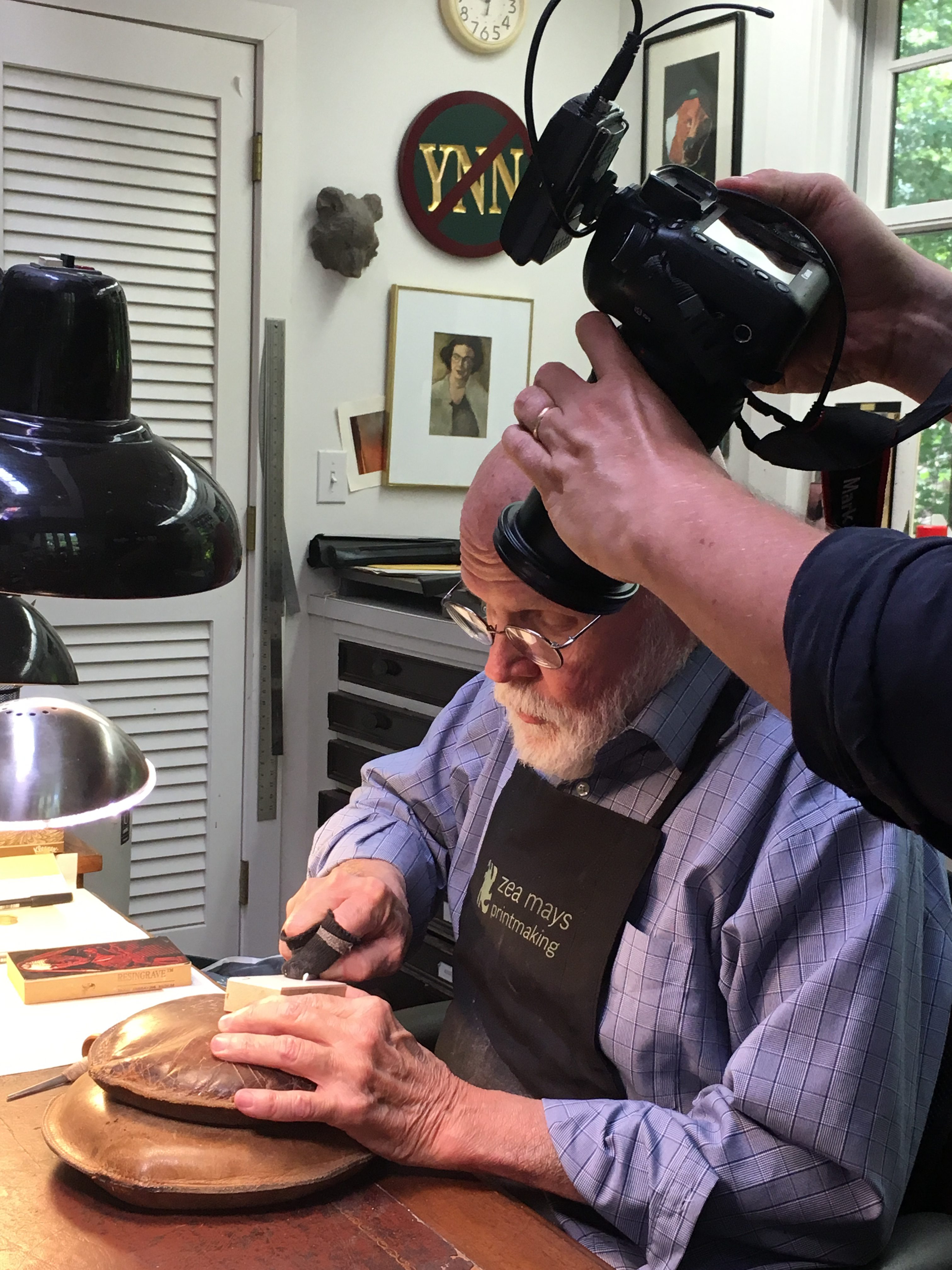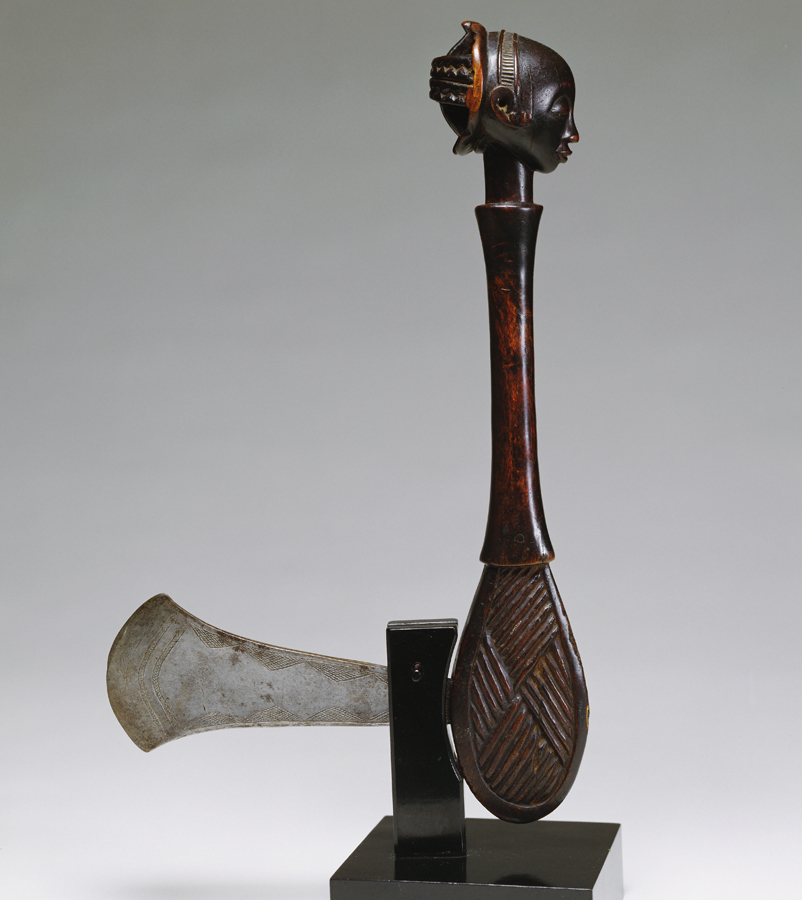ICP Internship Updates, Round 2: the book, an axe, and food for thought
This summer, 7 students from the Institute for Curatorial Practice are completing internships with Five College museums and faculty. A little more than half way done, interns Nolan Boomer, Theresa Mitchell, and Georgina Candia give updates on their research and digital projects.
In conjunction with Hampshire College’s current exhibition on the work of Barry Moser, I’ve been interviewing book artists who arrived in the Pioneer Valley in the 70s and 80s. So far I’ve interviewed Art Larson, Barbara Blumenthal, Daniel Kelm, Sarah Creighton, and Liz Chalfin. The work of these individual figures is well documented, so I want to discusses the connections between these individuals—there is something to be said about the proximity of these artists and the inherently collaborative nature of the book making.
Because Barbara Blumenthal teased out these connections in her publication Paradise Printed and Bound, I decided I could add to the conversation by interviewing younger book artists as well. Over the course of my conversations, I began to notice overlapping, yet distinct communities of book art. This is apparent in the variety of book arts fairs in the Valley. For example, the annual Northampton Book and Book Arts Fair shows the work of many of the people I interviewed—it tends to focus on seminal, local book artists who create their books by hand, often in small editions, and with more traditional techniques. In contrast, the newly established Northampton Print & Book Fair focuses on artists who create mechanically-printed artists’ books in larger editions. Finally, the Pioneer Valley Zine Fest focuses on DIY publications that are cheap to produce and buy, allowing for the distribution of any subject, but often centering on radical politics, personal narratives, comics, and punk culture.
While fewer young artists are going into the book arts professionally, many students complete internships with the well-established, local book artists I’ve spoken with. Perhaps this will allow both traditional and more contemporary book arts techniques to live on in the Valley.
Nolan Boomer, Hampshire College Art Gallery
Oberlin College ’16

Barry Moser in his studio.
I have always been a sentimental person, and my sentimentality often translates into an accumulation of stuff. A vase shaped like a ballet shoe, a sweater with seemingly more holes than fabric, a disposable tape dispenser from my mom. I always tried to surround myself with objects that reminded me of specific people and experiences. These so called “things” were not to be taken for granted as just objects, rather they became vessels to hold these memories. My attachment to objects informed my undergraduate career in which I focused on museum studies and epistemological understandings of objects, and further led me to the Institute for Curatorial Practice.
Through the institute, I am now participating in an internship with the Smith College Museum of Art. For my internship, I am designing a website in order to contextualize a 19th century Luba axe in the “Women in Power” installation. The axe consists of an elongated bell-shaped blade with a wooden handle. At the top of the handle is an idealized head of a woman.

Unknown maker, Luba people. Ceremonial Axe (Kafundashi), 19th century. Iron and wood, 15 3/4 x 9 x 2 7/8 in. Smith College Museum of Art, Purchased with the Drayton Hillyer Fund. SC 1939:9-1
There is a lot to unpack in this work that goes beyond just lookingideas of beautification, divinity, and royalty. Also, and most interesting to me, the axe is an object of memory. In 19th century Luba society, objects such as this one were used to evoke memories of past kings, whose spirit took the form of a woman after his death. Even more, historical spiritual leaders were thought to be women, and kings were able to assert their power through a divine lineage through depictions of women. There is another aspect to consider here, and that is the setting of this axe today. Memory is yet again functioning in a different way. Not only does the object hold memory, but now the axe is remembered through curatorial files archived in the museum.
I hope to use what I have learned to contextualize this axe in the most truthful way possible. But the knowledge I have gained will no doubt continue to inform the way I think beyond this internship. From my experience researching this object, I have expanded and reframed my understanding the ways in which objects can work in conjunction with memory.
Theresa Mitchell, Smith College Museum of Art
Wellesley College ’16
I just finished a History of Art and Visual Culture degree at the University of California, Santa Cruz. During this internship I have been doing data collection and preliminary research for an Anthropology faculty member at Hampshire College on a project in collaboration with the Science Museum of Minnesota, called “Food: Evolution and Revolution.” This project will not be launched until one year from now; therefore during this internship I performed a variety of tasks. I created a map marked with pins pointing to a number of food/beverage and/or nutrition museums across the world. I narrowed down the larger ideas involved in the project from 29 to 3. Currently, I am working on the graphics, layout and content of a website which will operate as a tool that future researchers can take advantage of.
Georgina Candia, Science Museum of Minnesota and Hampshire College
University of California, Santa Cruz ’16
This post is part of a series of essays, opinions, and reviews written by students, faculty, and staff of the Institute for Curatorial Practice.
